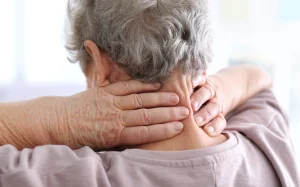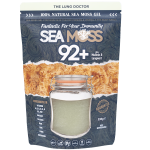CHRONIC PAIN DISORDER
CHRONIC PAIN DISORDER

Chronic pain disorder refers to persistent pain lasting for an extended period, exceeding three to six months. It can manifest in various forms, such as primary chronic pain, chronic cancer pain, post-traumatic post-surgical pain. Additionally, individuals may experience neuropathic pain, orofacial pain and headache, visceral pain, and musculoskeletal pain.
These different types encompass the wide range of chronic pain conditions. Chronic pain significantly impacts quality of life, leading to physical limitations, emotional distress, and social isolation.
Management involves a multidisciplinary approach with medications, physical therapy, cognitive-behavioural therapy, and lifestyle modifications. Natural treatments like arnica, calming plant lotions, exercise, acupuncture, psychotherapy, meditation, and yoga can alleviate symptoms and improve well-being.
A comprehensive treatment plan tailored to the individual’s needs is crucial for effectively managing chronic pain.
Description
Chronic pain disorder refers to a condition where individuals experience persistent pain that lasts for an extended period, typically exceeding three to six months. The pain may be localised in specific areas of the body or widespread throughout multiple regions.
It can be caused by various factors, including injury, inflammation, nerve damage, or underlying medical conditions. Chronic pain often significantly impacts a person’s quality of life, leading to physical limitations, emotional distress, and social isolation.
Management of chronic pain typically involves a multidisciplinary approach, including medications, physical therapy, cognitive-behavioural therapy, and lifestyle modifications. Additionally, alternative therapies such as acupuncture, massage, and relaxation techniques may be used to alleviate symptoms and improve overall well-being.
A comprehensive treatment plan tailored to the individual’s needs is crucial for effectively managing chronic pain.
Chronic pain disorders can manifest in a variety of ways, and individuals may experience a range of symptoms and sensations depending on the specific condition and its underlying causes. Here are some additional details and tips related to the symptoms:
- Persistent Pain: Chronic pain is characterised by long-lasting pain that often persists for months or even years. The location, intensity, and nature of the pain can vary widely.
- Aching or Throbbing: Chronic pain may present as a persistent dull ache or a throbbing sensation. The quality of pain can differ based on the condition causing it.
- Burning Sensation: Some individuals with chronic pain disorders, such as neuropathic pain, describe a burning or tingling sensation in the affected area.
- Sleep Disorders: Chronic pain can disrupt sleep patterns, leading to insomnia or fragmented sleep. Sleep disturbances can, in turn, exacerbate pain and fatigue.
- Loss of Appetite and Weight Loss: Chronic pain can affect appetite and lead to unintended weight loss. This can be due to factors such as reduced activity levels, altered metabolism, or the emotional impact of persistent pain.
- Decreased Libido: Pain and the emotional toll of living with chronic pain can lead to a decreased interest in sexual activity.
- Constipation: Opioid medications, which are sometimes prescribed for chronic pain, can cause constipation as a side effect. Additionally, reduced physical activity and dietary changes may contribute to gastrointestinal issues.
- Fatigue: Chronic pain is physically and emotionally draining, often leading to a profound sense of fatigue or exhaustion.
- Stiffness: Certain chronic pain conditions, such as arthritis or fibromyalgia, can result in stiffness in the affected joints or muscles.
Chronic pain can result from various underlying causes and affect different parts of the body. Here are some common types of chronic pain:
- Musculoskeletal Pain: This includes pain in muscles, bones, joints, ligaments, and tendons. Conditions like osteoarthritis, rheumatoid arthritis, fibromyalgia, and chronic back pain fall into this category.
- Neuropathic Pain: Caused by damage or dysfunction in the nervous system, neuropathic pain includes conditions like diabetic neuropathy, postherpetic neuralgia (shingles), and trigeminal neuralgia.
- Central Pain Syndrome: This type of pain results from damage to the central nervous system, such as after a stroke, multiple sclerosis, or spinal cord injury.
- Visceral Pain: Originating from internal organs, visceral pain can be associated with conditions like irritable bowel syndrome (IBS), endometriosis, and chronic pancreatitis.
- Chronic Headaches: Conditions like migraines, tension headaches, and cluster headaches can lead to recurrent and prolonged head pain.
- Chronic Pelvic Pain: Affecting the pelvic area, this type of pain can be associated with conditions such as pelvic inflammatory disease (PID), interstitial cystitis, and pelvic congestion syndrome.
- Complex Regional Pain Syndrome (CRPS): This condition involves severe pain, often in a limb, along with changes in skin colour, temperature, and swelling.
- Inflammatory Pain: Conditions like inflammatory bowel disease (IBD), rheumatoid arthritis, and autoimmune disorders can cause chronic pain due to ongoing inflammation.
- Post-Surgical Pain: Some individuals experience persistent pain after surgical procedures, known as post-surgical or postoperative pain.
- Degenerative Disc Disease: This condition involves the gradual breakdown of spinal discs, leading to chronic back or neck pain.
- Phantom Limb Pain: Experienced by individuals who have had a limb amputated, this pain occurs in the absent limb.
- Cancer Pain: Some cancers and their treatments can lead to chronic pain, including bone pain from metastasis or neuropathic pain from nerve compression.
- Vascular Pain: Conditions like peripheral artery disease (PAD) can cause pain due to reduced blood flow to the extremities.
Common causes of chronic pain, and it's important to recognise that chronic pain can result from a wide range of underlying conditions and circumstances. Here are some additional details about these causes:
- Injury and Trauma: Chronic pain can develop following injuries, accidents, or trauma. This may include conditions like chronic back pain from a herniated disc, chronic headaches after a head injury, or chronic pain from a past fracture.
- Infection: Some infections can lead to persistent pain even after the infection has been treated. For example, postherpetic neuralgia can result from a previous episode of shingles.
- Arthritis: Arthritis is a common cause of chronic joint pain. Osteoarthritis and rheumatoid arthritis are two forms of arthritis that can lead to ongoing discomfort and pain in affected joints.
- Cancer: Cancer itself can cause pain due to tumour growth and invasion of surrounding tissues. Additionally, cancer treatments like chemotherapy, radiation therapy, or surgery can result in chronic pain as a side effect.
- Surgery: Surgical procedures, even when successful, can sometimes lead to chronic post-surgical pain. This can be caused by nerve damage during surgery or the formation of scar tissue.
- Autoimmune Disorders: Conditions such as lupus, multiple sclerosis, or fibromyalgia can result in chronic pain as a consequence of the immune system attacking healthy tissues or affecting the nervous system.
- Neurological Disorders: Certain neurological conditions like neuropathy (nerve damage) can cause persistent pain, tingling, or burning sensations.
- Psychological Factors: Emotional factors like stress, anxiety, and depression can exacerbate chronic pain or even be a contributing cause. The mind-body connection plays a significant role in pain perception.
- Lifestyle Factors: Sedentary lifestyles, poor posture, and unhealthy habits can contribute to chronic pain, especially in areas like the back, neck, and joints.
- Genetics: Some individuals may be genetically predisposed to conditions that lead to chronic pain, such as certain types of arthritis.
While over-the-counter medications like acetaminophen, ibuprofen, and naproxen can be useful for managing mild to moderate pain, it's important to note that chronic pain often requires more comprehensive medical treatment, especially when it is persistent and severe. Here are some additional medical treatment options for chronic pain:
- Prescription Medications: Depending on the underlying cause of chronic pain, doctors may prescribe stronger pain medications such as opioids (e.g., hydrocodone, oxycodone) or other prescription pain relievers. However, the use of opioids is typically reserved for cases of severe pain and is closely monitored due to the risk of dependence and addiction.
- Physical Therapy: Physical therapy can be an essential component of chronic pain management. Therapists use a variety of techniques to improve mobility, reduce pain, and strengthen muscles, which can help alleviate chronic pain caused by musculoskeletal issues.
- Interventional Procedures: Some chronic pain conditions can be treated with minimally invasive procedures. Examples include nerve blocks, epidural injections, facet joint injections, and radiofrequency ablation. These procedures target specific pain sources and can provide long-lasting relief.
- Nerve Stimulation: In cases of neuropathic pain or complex regional pain syndrome (CRPS), nerve stimulation techniques like spinal cord stimulation (SCS) or peripheral nerve stimulation may be considered to modulate pain signals.
- Intrathecal Drug Delivery: For certain chronic pain conditions, such as severe cancer-related pain or spasticity, intrathecal drug delivery systems can be implanted to deliver pain-relieving medications directly into the spinal fluid.
- Multidisciplinary Pain Management Programs: Many chronic pain patients benefit from participating in comprehensive pain management programs that incorporate a combination of treatments, including physical therapy, psychological counselling, medication management, and lifestyle modifications.
- Psychological Counselling: Cognitive-behavioural therapy (CBT) and other forms of psychotherapy can help individuals cope with chronic pain by addressing the psychological and emotional aspects of pain perception.
- Alternative and Complementary Therapies: Some individuals find relief from chronic pain through treatments like acupuncture, chiropractic care, massage therapy, and biofeedback.
- Surgery: In certain cases, surgery may be recommended to correct structural issues contributing to chronic pain. This may involve procedures like joint replacement, spinal surgery, or nerve decompression surgery.
Natural approaches and complementary therapies can play a valuable role in managing chronic pain. These methods can often be used in conjunction with medical treatments to improve overall well-being and reduce the reliance on medications. Here's a more detailed look at some of these natural treatments:
- Arnica: Arnica is an herbal remedy often used topically for muscle pain, bruises, and inflammation. Arnica creams or gels can be applied to affected areas.
- Calming Plant Lotions: Certain plant-based lotions or creams containing ingredients like lavender, chamomile, or peppermint may have soothing effects on the skin and muscles, providing relief from pain and tension.
- Regular Exercise: Engaging in a consistent and gentle exercise routine can help improve flexibility, strength, and circulation, which may alleviate chronic pain. Activities like walking, swimming, and yoga are often recommended.
- Acupuncture: Acupuncture involves the insertion of thin needles into specific points on the body to stimulate energy flow and promote pain relief. Many people find it helpful for managing chronic pain conditions.
- Psychotherapy: Chronic pain can take a toll on mental health, and psychotherapy, such as cognitive-behavioural therapy (CBT), can assist individuals in coping with pain-related stress, anxiety, and depression.
- Meditation and Yoga: Mind-body practices like meditation and yoga can promote relaxation, reduce stress, and improve pain perception. They may also enhance overall physical and mental well-being.
- Hydration: Staying well-hydrated is important for overall health, and it can help alleviate some types of chronic pain, especially those related to muscle tension or dehydration.
- Massages: Therapeutic massages from trained professionals can target specific areas of pain, relax muscles, and improve circulation. Different massage techniques may be used depending on the type and location of pain.
- Aromatherapy: Essential oils like lavender, peppermint, and eucalyptus are commonly used in aromatherapy to promote relaxation and ease pain when applied topically or used in diffusers.
- Hydrotherapy: Soaking in warm baths or using hot and cold packs can provide temporary pain relief and reduce muscle tension.
- Quality Sleep: Adequate and restful sleep is essential for pain management and overall health. Developing healthy sleep habits can significantly impact chronic pain.
- Stress Management: Chronic pain is often exacerbated by stress. Techniques such as deep breathing exercises, progressive muscle relaxation, and biofeedback can help individuals manage stress and reduce its impact on pain perception.








